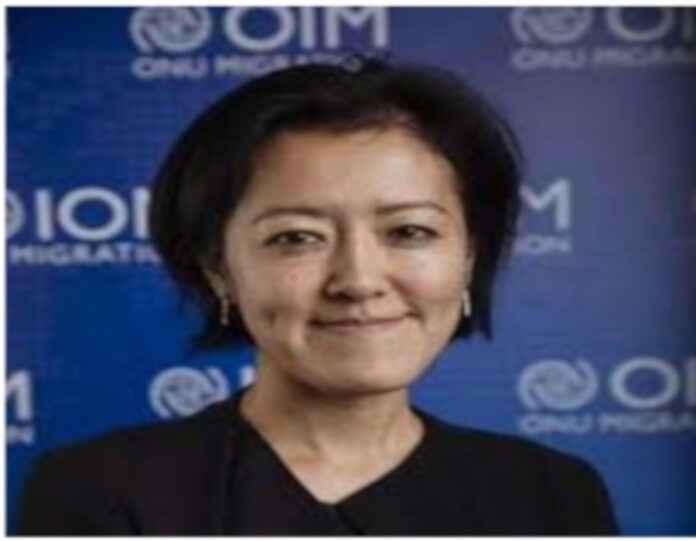By Ndey Sowe
Fumiko Nagano, the Chief of Mission of the International Organization for Migration (IOM) in The Gambia, said Thursday that a survey on Migration Policies in West Africa revealed that emigration from The Gambia is particularly unique because Gambians constitute a disproportion high percentage of the arrivals in Europe, considering the small size of the country.
Madam Nagano added that The Gambia is a country of origin, transit and destination for an increasing number of domestic and international migrants.
Shedding light on the sheer volume of migration in The Gambia between January 201 7 and July 2020, IOM Chief of Mission said “over 5, 200 migrants have returned to The Gambia, primarily from Libya and Niger.”
IOM Chief of Mission made these remarks during the launching of the Displacement Tracking Matrix (DTM) and establishment of Flow Monitoring Points (FMP) in the Gambia.
The DTM/ FMP are data tools that aim to track migration and mobility patterns in the Gambia. And that the DTM is a system to track and monitor displacement and population mobility.
She remarked: “The magnitude in West and Central Africa, both traditional movement and new migration patterns towards Europe is high.”
Nagano said this prompted IOM in close coordination with national governments, to set up Flow Monitoring Points (FMP) in various countries across the region. She explained that FMP comprises part of the DTM tool to derive quantitative estimates of the movement of migrants at and through specified locations.
“We are pleased that The Gambia is joining the ranks of the rest of the countries in the region to launch the DTM and FMPs,” she said, while hoping that the data collection through this initiative will help all actors involved in migration to fight misinformation surrounding irregular migration.
She added: “We will be implementing a second phase of this project, starting later this year, during which we hope that the data gathered would inform migration programming and policymaking by local and national authorities as well as partners that could address common source of social unrest and conflict.”
At the national level, Madam Nagano hoped that the Government will have reliable data to make informed policy to address conflict drivers, and protect and provide required assistance to migrants.
Nagano concluded that all stakeholders from Government, Non-Government Organizations, Civil Society Organizations and the private sector are very critical for enriching the conversation on migration data collection.
According to IOM, with a population of two (2) million, The Gambia is one of Africa’s smallest countries. Despite its size, migration plays a significant role in Gambian society.
“Overseas remittances of an estimate 90,000 Gambians living abroad account for over 20 percent of the country’s GDP, while rural-to urban migration has increased. In recent years, the pursuit for socioeconomic advancement especially among the youth- has driven many to undertake irregular migration with the aim to reaching Europe,” IOM stated.
Over 35,000 Gambians arrived in Europe by irregular means between 2014 and 2018, with many others in Africa along the Central Mediterranean Route opting for voluntary return.






















